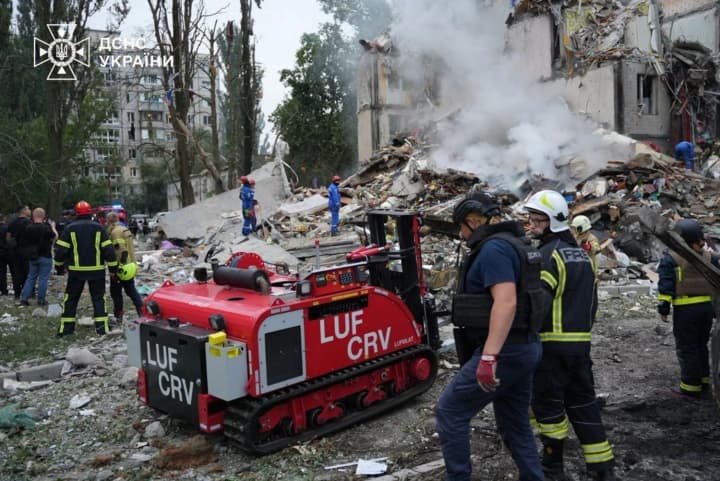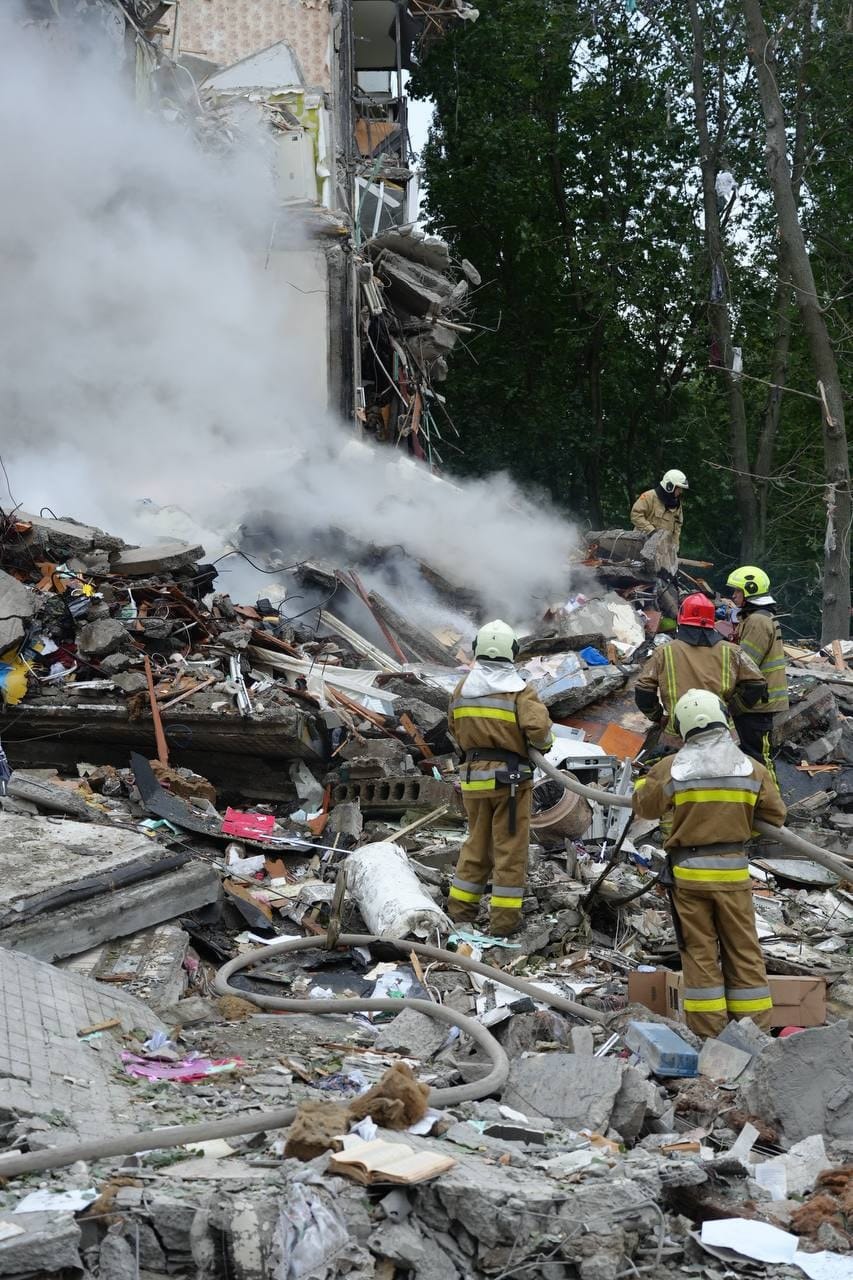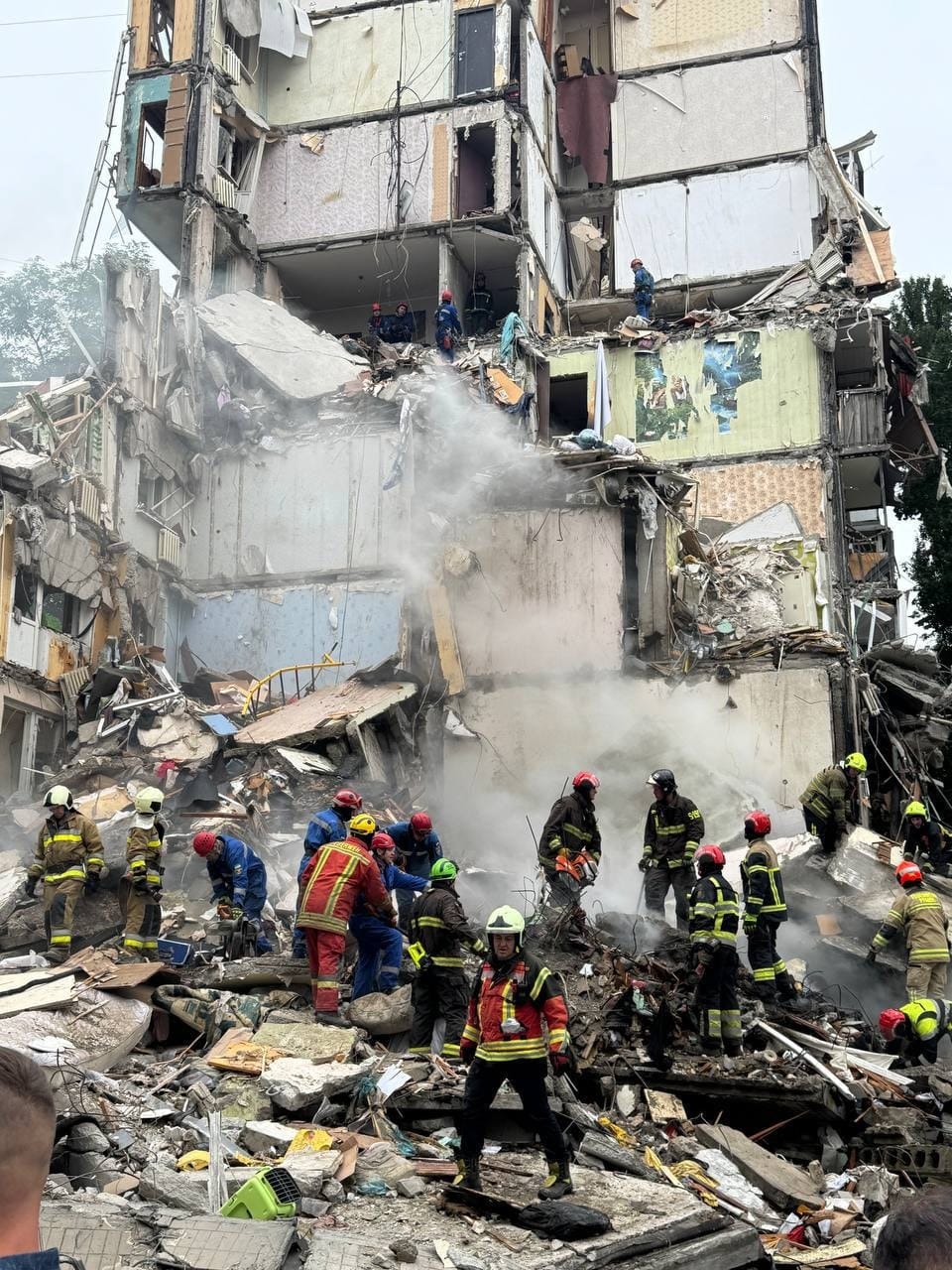Daily Flyer - July 31, 2025
A voice of Ukraine to the West

Russia conducted a mass aerial attack on Kyiv

Russia launched a massive overnight attack on Ukraine using 317 drones and missiles between July 30 and 31, with the majority aimed at Kyiv. Ukrainian air defense forces successfully intercepted 291 aerial targets, but several projectiles and debris still struck the ground, causing casualties and damage. Emergency services responded to multiple incidents across the capital as authorities assessed the aftermath of one of the largest air assaults in recent months.

A Russian missile and drone attack has struck twenty-seven locations across four districts in the city of Kyiv. Eight people have been killed and another 124 injured, including nine children, as well as three police officers who were responding to a call.
Solomianskyi district of Kyiv suffered significant damage, including to an educational institution and a residential building, according to Tymur Tkachenko, head of the city's military administration.
The Sviatoshynskyi district was also struck, where a fire burned several vehicles and debris hit the ninth floor of a residential building. Additional damage was reported in the Holosiivskyi and Shevchenkivskyi districts.
After the first wave of air raids ended at 3:20 a.m. local time, the alarm resumed about an hour later, at 4:30 a.m., as the Air Force warned of renewed missile threats. Another series of explosions followed.
A residential building in the Sviatoshynskyi district was hit and partially destroyed, with people reported trapped under the rubble. President Volodymyr Zelensky shared footage from the site and confirmed that first responders were actively working.
In Shevchenkivskyi district, windows in the children’s wing of a hospital were shattered, though no injuries were reported. Railway infrastructure was also damaged in one district, leading to traffic disruptions but no casualties, according to Ukrainian Railways.
In addition, missile debris struck the courtyard of the Islamic Cultural Center, damaging the mosque and surrounding facilities, according to Oleh Khalydovych, a representative of the local Muslim community. No injuries were reported there either.




The attack came shortly after U.S. President Donald Trump threatened to impose new tariffs on Russia within 10 days unless the Kremlin agrees to halt its full-scale war against Ukraine.
"Kyiv is under massive drone attack. Make no mistake, this is Putin’s response to President Trump’s deadline," Meaghan Mobbs, daughter of U.S. Special Envoy for Ukraine Keith Kellogg, wrote on X. "He is testing American resolve and strength. We must not be found wanting."
Zelenskyy signed the law on reinstating the independence of Ukraine’s key anti-corruption bodies right after the Rada voted for it
President Volodymyr Zelenskyy has signed into law a bill restoring the previously revoked guarantees of independence for Ukraine’s National Anti-Corruption Bureau (NABU) and Specialized Anti-Corruption Prosecutor’s Office (SAPO), less than two hours after it passed in the Verkhovna Rada.
Zelenskyy confirmed the decision on Telegram, thanking members of parliament for supporting the bill. "I have just signed the document, and it will be published immediately. These are guarantees for the proper, independent functioning of our anti-corruption agencies and all law enforcement bodies in our country," he wrote. A total of 331 MPs voted in favor.
He emphasized the importance of public feedback in the legislative process. "Ukraine is a democracy – there is no doubt about it. Government officials will also immediately inform Ukraine’s partners about this law," Zelenskyy added.
The move comes after days of public backlash and mass protests following the July 22 signing of a previous bill that had stripped NABU and SAPO of their independence, triggering concern in Ukraine and among international partners.
Russia used rocket-powered kamikaze drones in the overnight Kyiv attack
Russia used rocket-powered Shahed-type drones during its large-scale attack on Kyiv on July 31, marking a new phase in its drone warfare campaign against Ukraine, Interior Minister Ihor Klymenko told TSN.
“There is preliminary information that rocket-powered Shahed-type drones were used. They have previously targeted civilian and municipal infrastructure in Ukraine and Kyiv,” Klymenko said. Experts are still assessing how many such drones were deployed.
The overnight barrage killed at least nine people and wounded 135, including children, according to local officials. President Volodymyr Zelensky said over 300 drones and eight missiles were launched in the assault on Kyiv and other regions.
Shahed-type drones—originally designed in Iran and heavily modified by Russia—have become a key tool in Moscow’s long-range strike arsenal. Their appeal lies in their cost-effectiveness and ability to carry large warheads over long distances.
Since late 2022, Russia has increased the scale and sophistication of its drone strikes. The rocket-powered or jet-assisted variant represents a significant technical evolution. Ukrainian forces reported downing the first such drone in January 2024.
While Ukraine’s military has not shared technical specifics about this newer variant, eight similar drones were reportedly used in attacks on southern Ukraine a day earlier, on July 30.
Russia's intensified aerial campaign throughout 2025 has broken records in drone usage and inflicted mounting civilian casualties. In response, Ukraine is calling for more international support to expand air defense coverage and accelerate domestic drone production.

